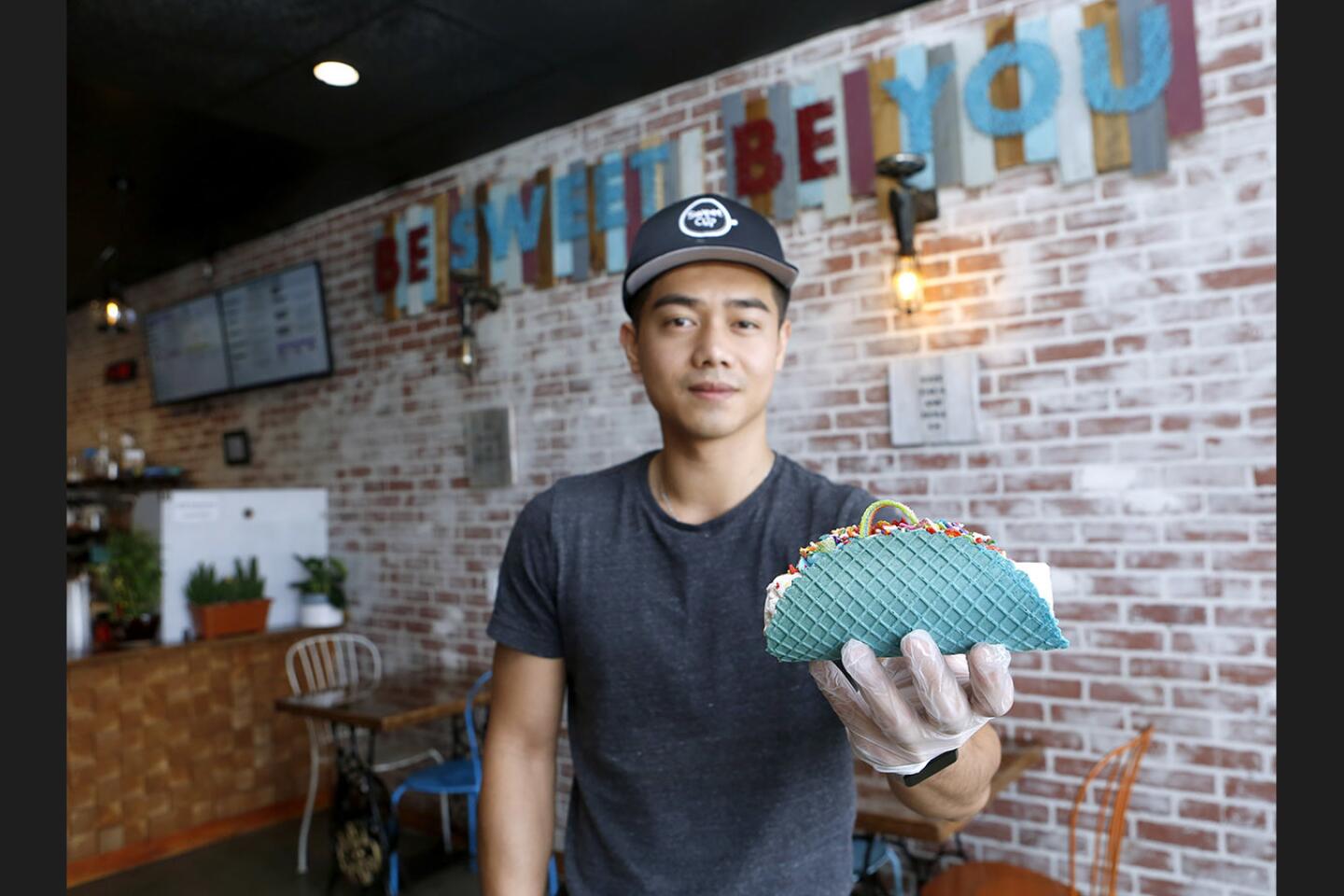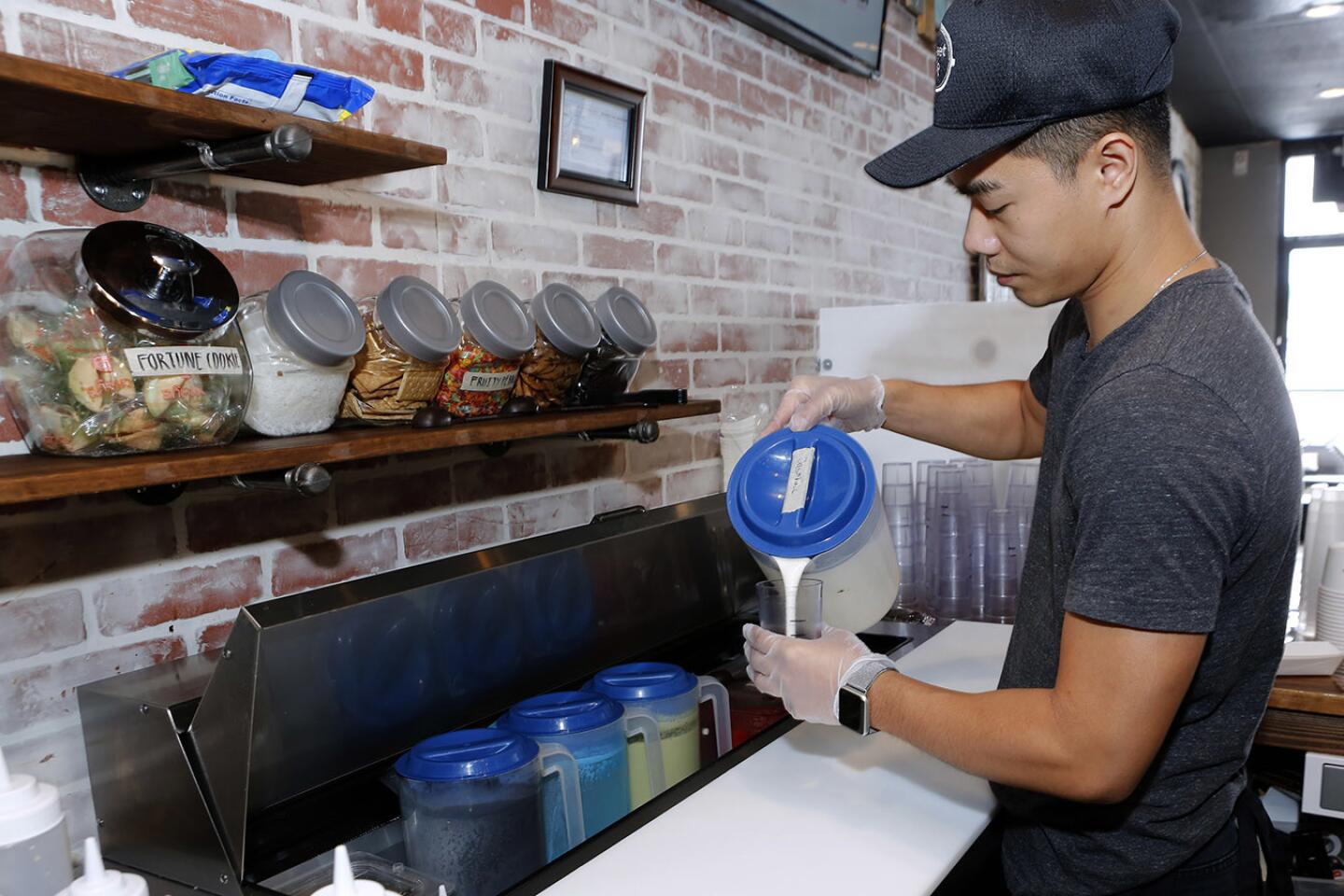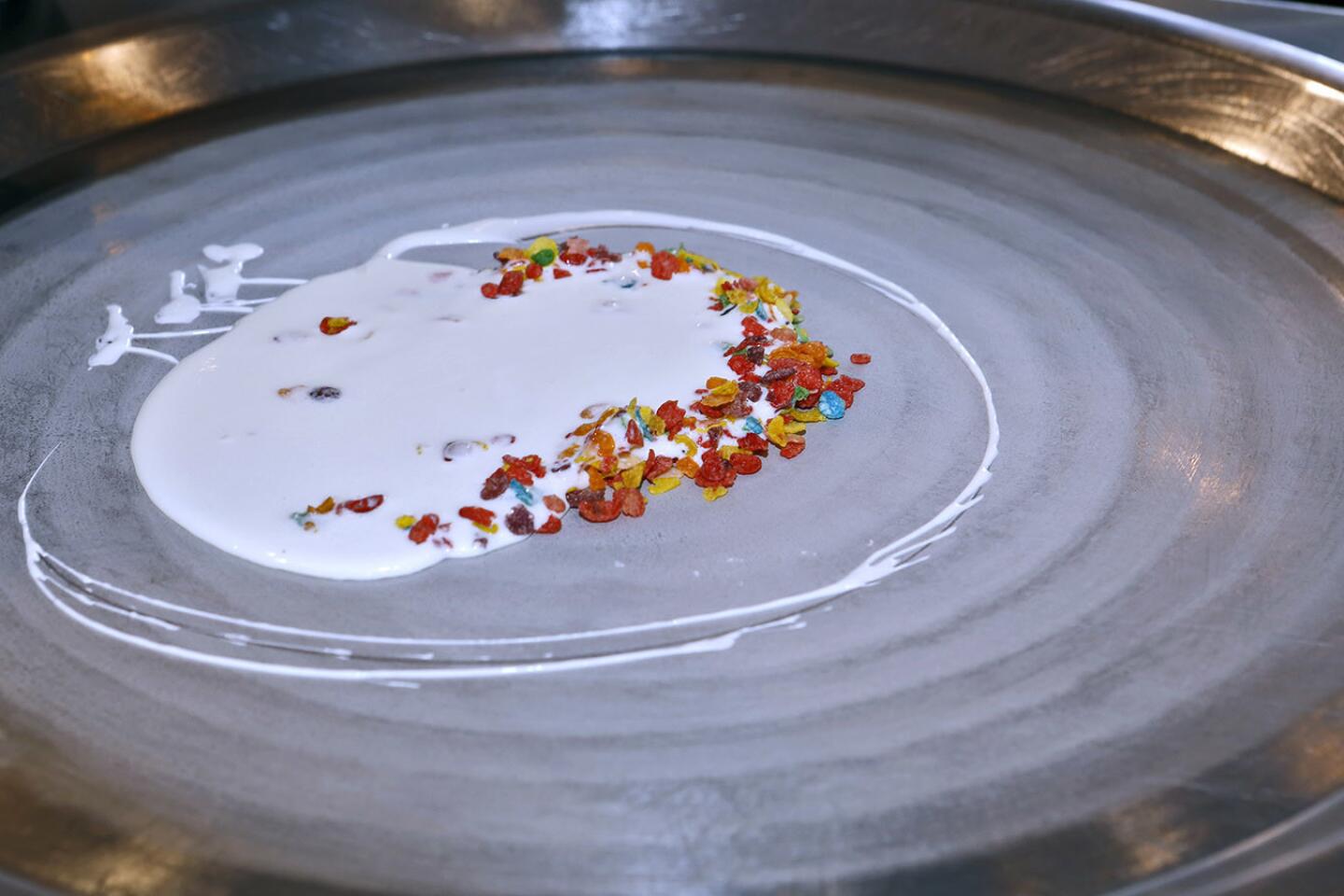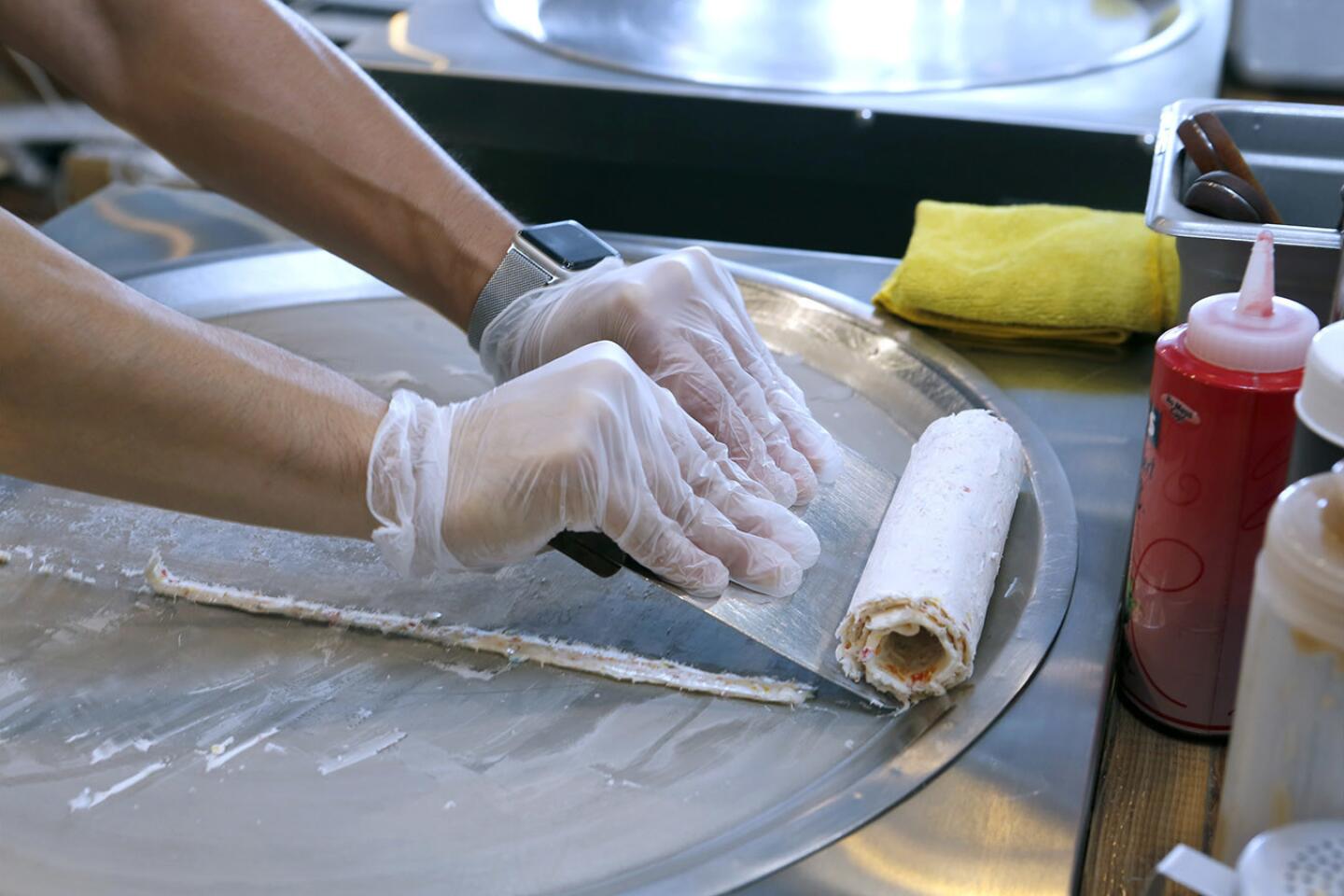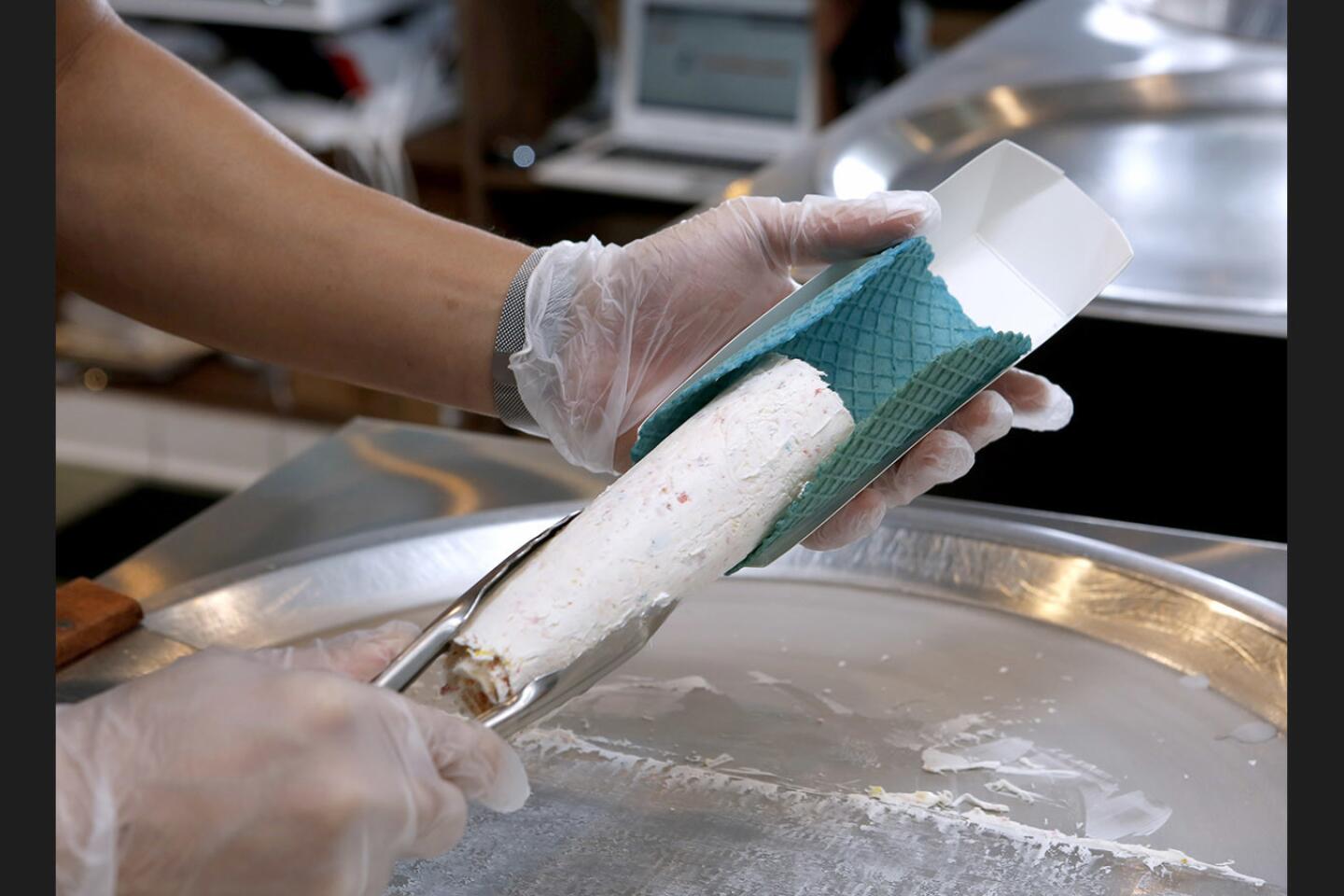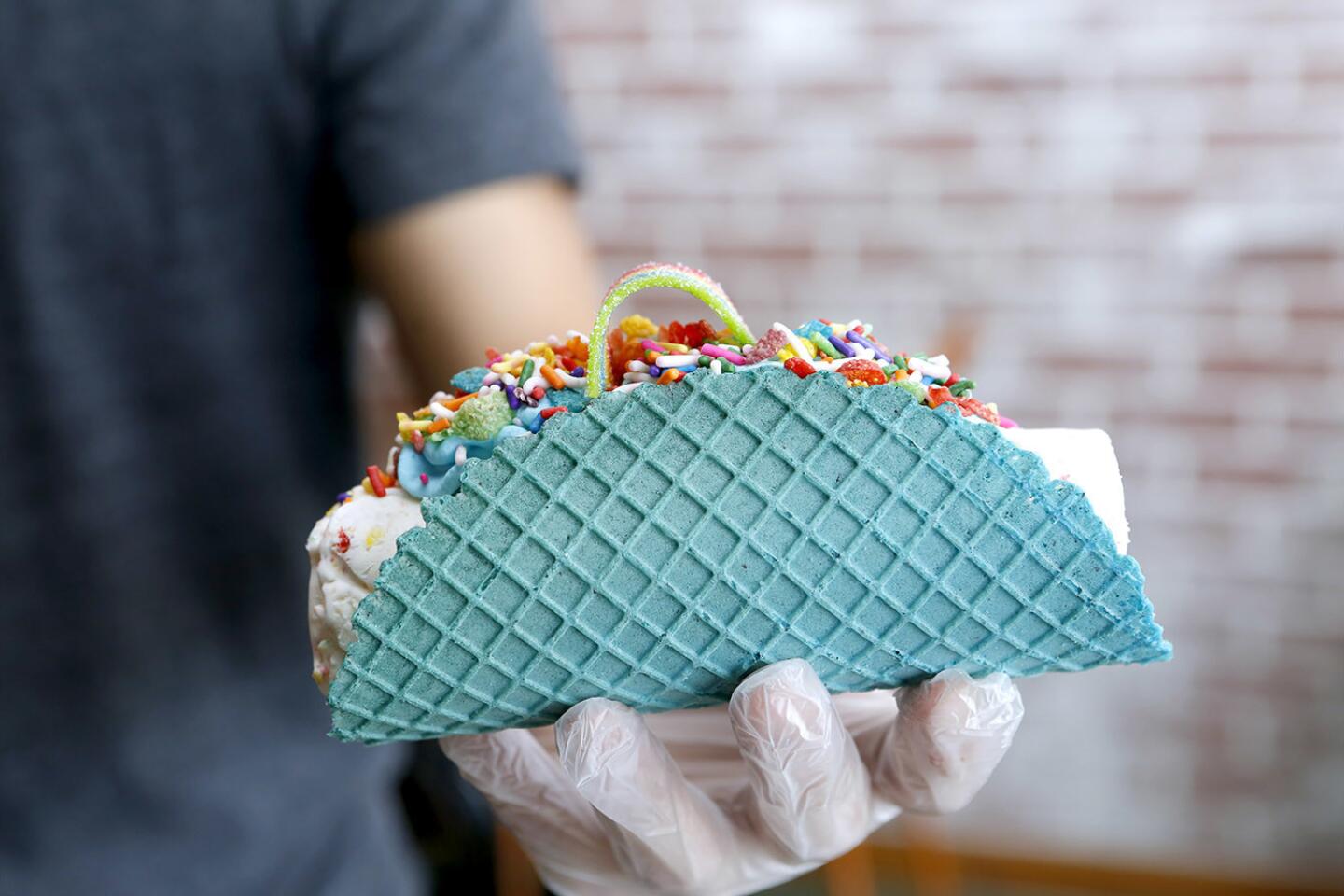Instagram means insta-success for Orange County dessert shops
- Share via
A picture has always been worth a thousand words. But nowadays, that picture could be worth a million sales.
Dessert shops across Orange County say that photo-sharing app Instagram has become a free and easy way to showcase their sweets.
But it also has business owners thinking critically about how to make their confections and store environment stand out in a digital world already brimming with food images that use clever hashtags and color inducing filters.
As dessert-makers squeezed their creative juices, the result inspired the use of more color, unique flavorings and artistic toppings.
For married couple Caroline and Patrick Nguyen, Instagram images of customers enjoying bright and vivid treats led them to add more color to their milkshakes at The Straw in Costa Mesa, which opened in spring.
“Milkshakes tend to be off-white or creamy and that doesn’t pop out immediately,” Patrick said.
The Straw’s menu — which has evolved since the opening, the Nguyens said — lists vibrant milkshakes from the orange-hued “Bangkok Betty” made with mango and coconut cream to the chocolate “Storm” that appears purple from added blackberries. To top off the drinks, an array of embellishments like flowers and stained glass candy are added to the final product.
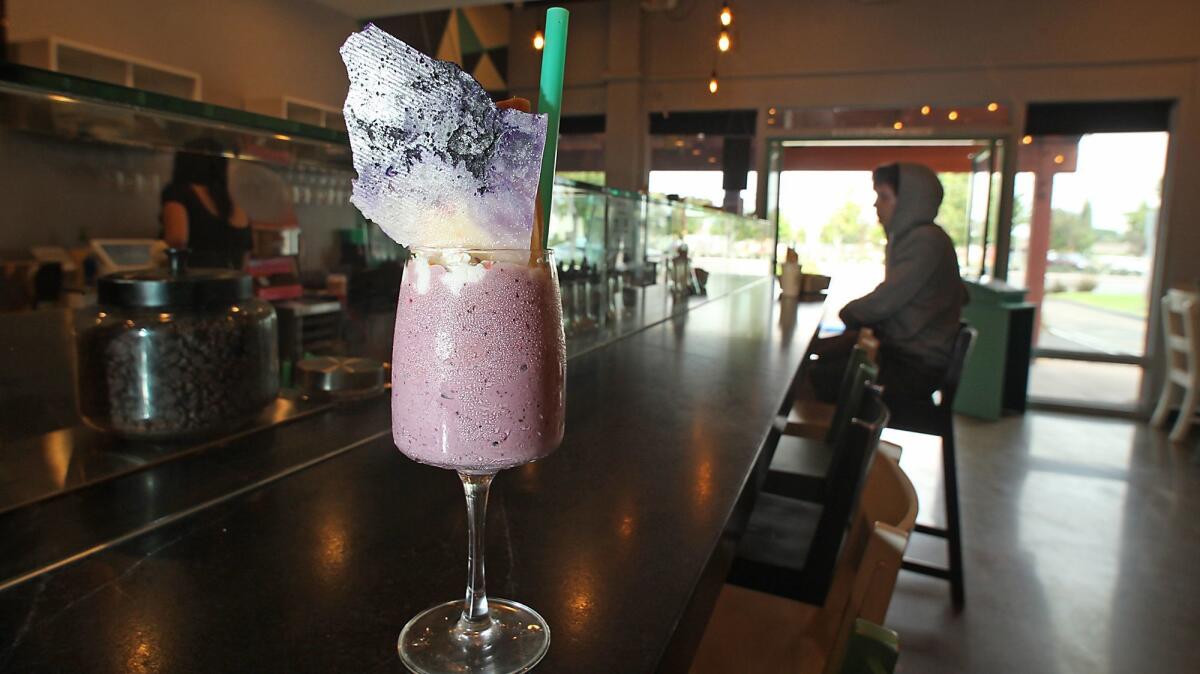
“In this industry, a lot of things revolve around social media,” Patrick said. “Anytime someone shares a photo, it’s no different than them saying ‘Hey, you should try such and such place.’ That word of mouth is stronger than any ad.”
Mohammad Reza Habibi, an assistant professor at Cal State Fullerton’s Mihaylo College of Business and Economics Marketing Department, said the method is powerful partly because it comes from a trusted source.
“You see someone you know recommend something and you have no hesitation to buy it,” Habibi said. “In this case, for restaurants and dessert shops, [Instagram] is a good fit simply because there are shareable materials and this is a very visual app. It’s basically people scrolling up and down to look at photos and tagging friends if they like them.”
For Sweet Cup owner Kenny Tran, the electronic buzz about the ice cream tacos at his shop in Garden Grove caused a stir before the location officially opened in June.
As Tran experimented with the colored waffle shells and rolled ice cream flavors, friends of his had taken photos of the concoction and posted them on Instagram.
The picture made its way through the Instagram feeds of other users, catching the attention of a highly-followed food video blogger and prompting multiple tags to Thrillist, a digital lifestyle brand that covers topics like food and entertainment.
“The last time people saw an ice cream taco was Choco Taco,” Tran said, referring to the brown dessert topped with chocolate and nuts. “I believe it’s our colors, the rolls of ice cream and the decorating that make it new, something reinvented and refreshing.”
Eventually, a Thrillist videographer visited the Garden Grove shop to shoot the ice cream tacos being made, later producing a video that attracted millions of views online.
This summer, Tran saw Sweet Cup serve around 500 to 600 orders a day and two-hour waits that wrapped around the building.
Like many other local dessert shops, Sweet Cup’s business info can be found on its Instagram account and many of the comments on pictures have users tagging their friends, suggesting they check out the food.

The tacos are made from house-made waffle shells in colors such as red, blue and purple while the rolled ice cream inside comes in flavors like as strawberry shortcake, s’mores and matcha green tea. Toppings include fruity pebbles, graham crackers and house-made cotton candy whipped cream.
Besides the food, restaurants are also rethinking how their environment should look to attract customers, according to marketing experts.
“It’s a place you want to check-in to or share a photo of … and [the décor] doesn’t have to be expensive as long as it’s creative and clever,” said Steven Ozbun, president of Restaurant Marketing Labs, a San Diego-based media company.
The popularity of photo-sharing led the Nguyens to think of how The Straw could be fashioned in order to create what Caroline calls “Instagram-worthy pictures.”
A few weeks ago, the couple added a quote wall where customers can arrange boards with different words printed on them like “Love” and “Chocolate.”
Emblazoned on another wall is The Straw’s logo, a stem glass with a straw coming out of it.
The logo — also used as The Straw’s Instagram profile photo — features the same glass that all the shop’s milkshakes come in, a glass the couple searched long and hard for to make sure their drinks would not become another identical picture among the milkshake hashtags.
“We looked at a lot of barware when picking out a glass,” said Patrick Nguyen, who also carries experience as a bartender. “We knew for sure we didn’t want a mason jar. If you end up looking like everyone else, then your brand becomes diluted.”
While Habibi said there’s no “magic recipe to be a winner” on the app, the key steps include having a good product, being active in posting and making the channel engaging for people.
“From my experience, the more photogenic desserts you have will bring in the customers … definitely the first timers,” said Anne Tran, an owner of the Anaheim Packing District’s Popbar, which serves handcrafted gelato on a stick. “You just got to make sure that the product is actually good and not just pretty.”
Popbar’s gelato on a stick flaunts a variety of flavors in different colors, stylishly patterned toppings and chocolate dippings and a white drizzle design made popular by customer Instagram photos, Anne said.
Before Anne and her husband, Dan Tran, became owners, they went to Popbar’s first location in New York City where Anne’s brother ordered one of their items.
“He took a picture of it and I told my husband ‘This is very Instagrammable,’ ” Anne said. “I contacted [Popbar] and told them they need to be in California. The rest is history.”
Having other food photos so easily accessible has also left dessert-makers with another feeling — the pressure to come up with the next big thing.
“I’m feeling it now,” Sweet Cups’ Kenny Tran said with a laugh. “Like, what ice cream flavors do we have to come up with next? There’s a lot of trial and error, but it’s all about how we execute it and make it our own.”
When Anne and Dan first opened Popbar in Anaheim, the couple asked customers how they heard of their shop. The overwhelming majority said Instagram, Anne recalled.
As far as the future of food and social media, Ozbun predicts that videos with content such as food being prepared or visitor reactions to items will become more prevalent and that ordering based off of the photos might take preference over traditional menus.
“These places have to take branding and storytelling to the next level in order to stay relevant,” Ozbun said. “The restaurant industry itself is experiencing quite a revolution and that’s very exciting.”
Twitter: @AlexandraChan10
All the latest on Orange County from Orange County.
Get our free TimesOC newsletter.
You may occasionally receive promotional content from the Daily Pilot.

